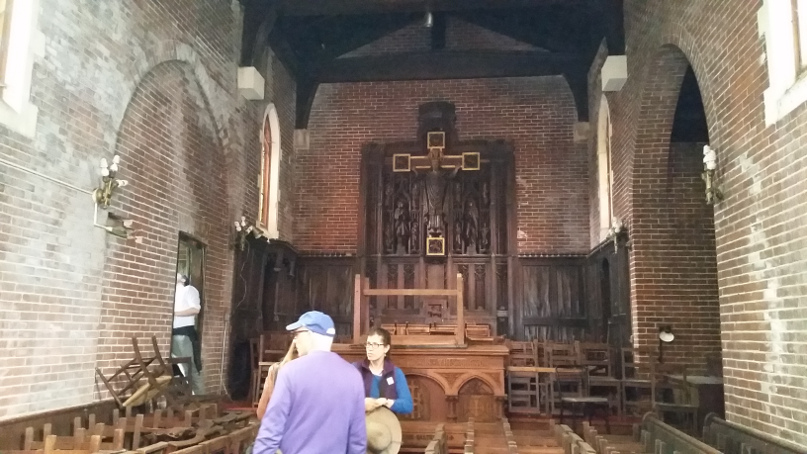
20 Dec 2016 Ralph Adams Cram in Roxbury
Historic Boston is beginning to explore the history and evolution of two related buildings at 149 Roxbury Street in Roxbury’s John Eliot Square. Ionic Hall, Roxbury’s oldest brick building, dates to 1800, and in form, exemplifies Federal Period style, a period of architecture inspired by post-Revolutionary interest in Roman and Greek antiquities and design. The second structure – always a curiosity to us – is known as St. Luke’s Chapel, dates to the late 19th/early 20th century, and looks like a medieval church from the English countryside.
Both are owned by the Epis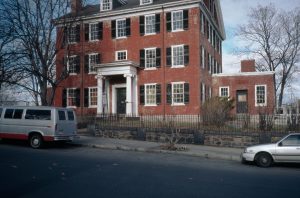 copal Church of St John and St. James, a congregation that was assembled from two former Roxbury Episcopalian churches. Today the parish worships from a large first-floor space in Ionic Hall, but their histories are woven together and express the evolution of John Eliot Square, the neighborhood of Roxbury, and the larger urban forces that have shaped the 21st century Boston of today.
copal Church of St John and St. James, a congregation that was assembled from two former Roxbury Episcopalian churches. Today the parish worships from a large first-floor space in Ionic Hall, but their histories are woven together and express the evolution of John Eliot Square, the neighborhood of Roxbury, and the larger urban forces that have shaped the 21st century Boston of today.
So far as we know, Ionic Hall was built as the home of a Mrs. Hammond, the daughter of a Captain Stoddard of Hingha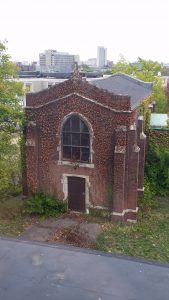 m. The gable-ended roof was a later addition. It was a private residence until it was sold in the 1870s and became St. Luke’s Convalescence Home for the sick and aged, apparently under the auspices of the Episcopal Church. In the 1950s, as Urban Renewal planning was taking shape, St. Luke’s merged with a similar venture in Jamaica Plain and became today’s Sherr ill House. At the same time, St. James Episcopal Church on Dudley Street in Roxbury was sold and the parish merged with St. John’s parish here at 149 Dudley Street to form St. John and St. James Church.
m. The gable-ended roof was a later addition. It was a private residence until it was sold in the 1870s and became St. Luke’s Convalescence Home for the sick and aged, apparently under the auspices of the Episcopal Church. In the 1950s, as Urban Renewal planning was taking shape, St. Luke’s merged with a similar venture in Jamaica Plain and became today’s Sherr ill House. At the same time, St. James Episcopal Church on Dudley Street in Roxbury was sold and the parish merged with St. John’s parish here at 149 Dudley Street to form St. John and St. James Church.
On a recent walking tour of 20th century modernist Roxbury architecture, HBI serendipitously met the priest from St. John St. James outside 149 Roxbury Street and was able to see the interior of the second structure, St. Luke’s Chapel. Designed by the well-known ecclesiastical architect Ralph Adams Cram, St. Luke’s has been dated as both 1893 and 1900, but it’s overall design and specific aspects of it are quintessentially Cram. It is a small structure with simple features, but is accented by a wooden reredos and cross decoration by the Boston-based wood carver Johannes Kirchmayer, a frequent Cram collaborator.
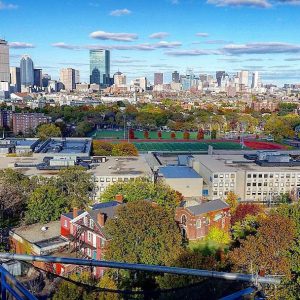 Both are in a National Register District and yet both are in very tough shape. While Ionic Hall is used for worship and meetings, its upper floors are vacant and have suffered from water damage in recent years. St. Luke’s is a greater challenge. It has had severe water penetration through holes in the roof, and the interior has suffered substantial deterioration and damage. Yet the Kirchmayer carvings are intact and the structure seems stable.
Both are in a National Register District and yet both are in very tough shape. While Ionic Hall is used for worship and meetings, its upper floors are vacant and have suffered from water damage in recent years. St. Luke’s is a greater challenge. It has had severe water penetration through holes in the roof, and the interior has suffered substantial deterioration and damage. Yet the Kirchmayer carvings are intact and the structure seems stable.
While researchers know the significance of these places, most people have little sense of the importance of these places to Roxbury history, nor what they might bring to the life of the neighborhood if restored sensitively. Historic Boston has begun a conversation with the Episcopal Diocese of Boston to see how it might help find a re-use solution for either or both buildings that continues to serve the church or neighborhood needs. We are particularly interested in supporting restoration of Cram’s St. Luke’s chapel, a rare gem of early 20th century gothic revival architecture and the only of Cram’s buildings in Roxbury.
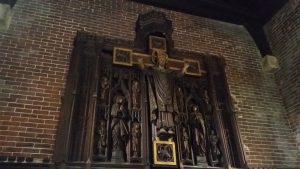
John Eliot Square is a very special place and its history is expressed in an impressive assembly of important buildings and landscapes: the 17th century location of the first colonial church, the 18th century Dillaway Thomas House (home of the Roxbury Heritage State Park), the oldest remaining frame church in Boston (First Church, 1804), the 19th century Norfolk House, the early 20th century Timilty School and late 20th century Marcus Garvey Gardens housing. Re-activation of Ionic Hall and St. Luke’s Chapel can round out this extraordinary meeting of architecture, history and modern life.



